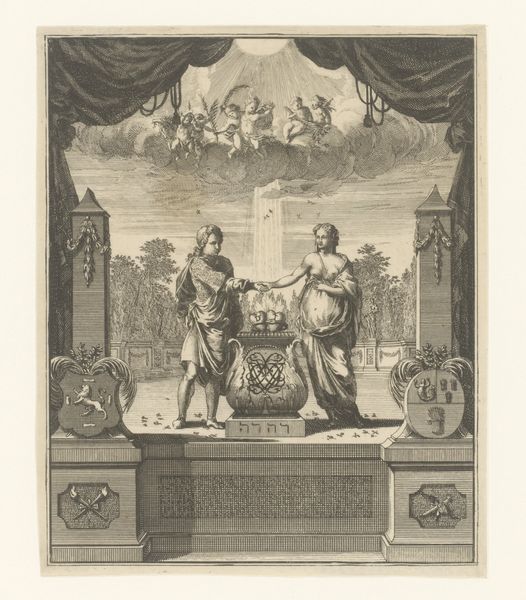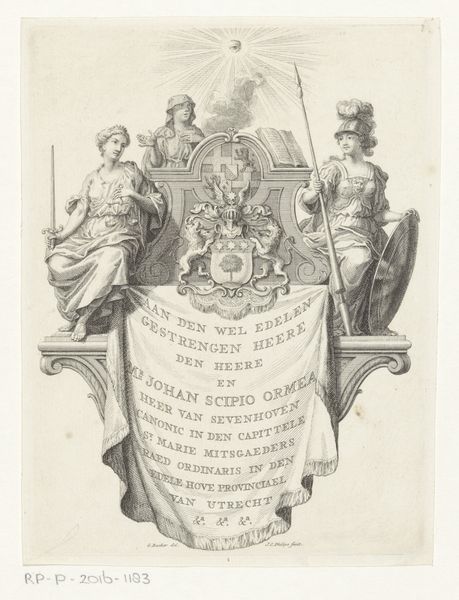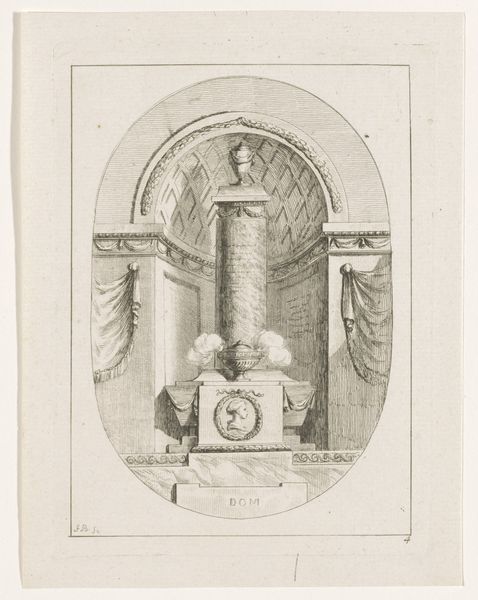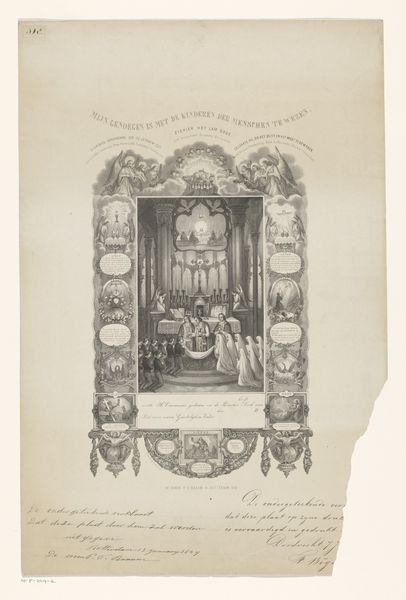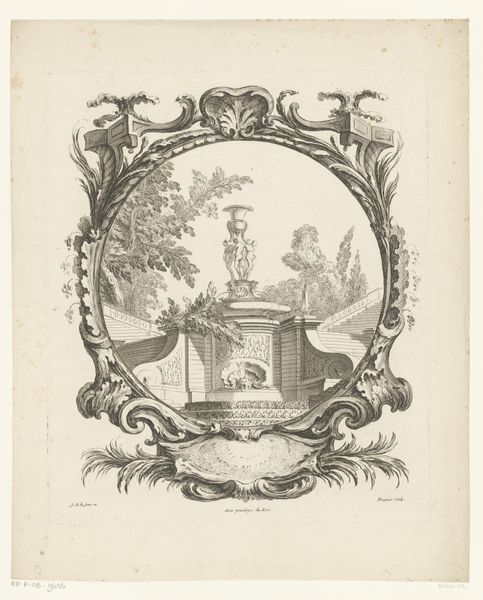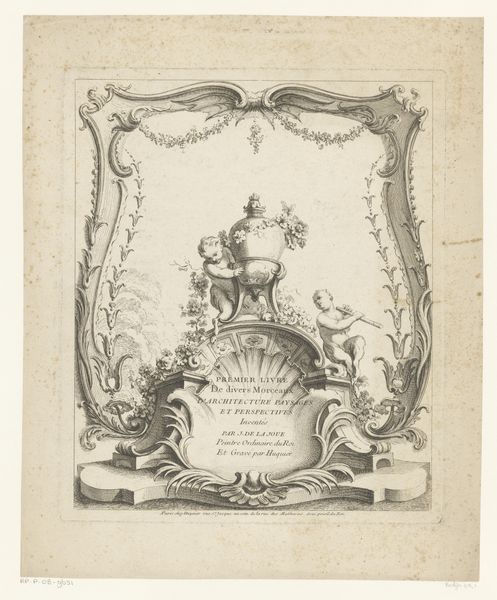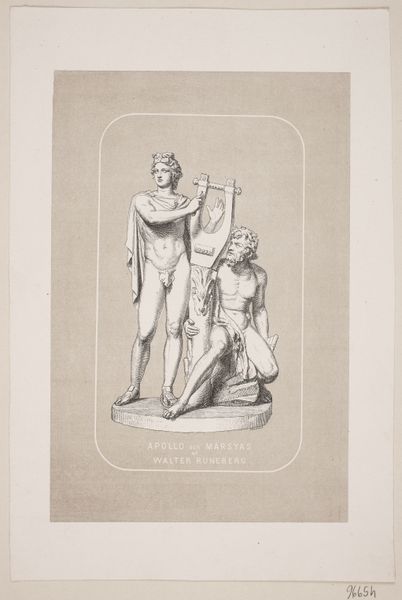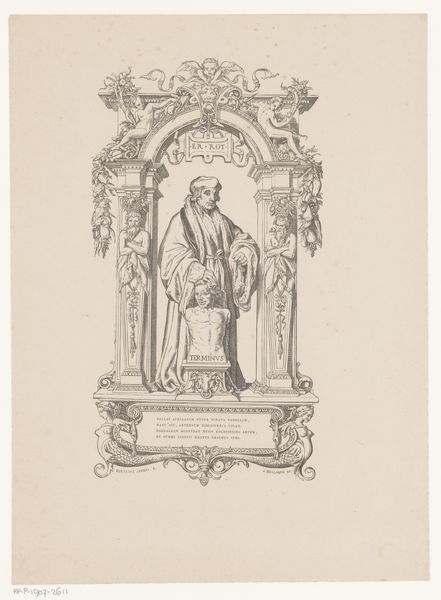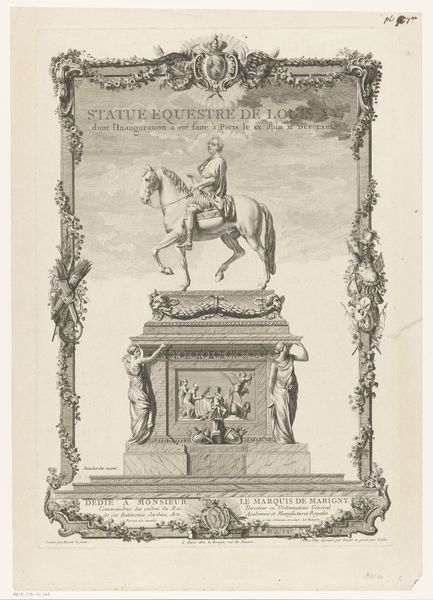
Portret van Napoleon Bonaparte in een medaillon omringd door engelen en allegorische figuren 1805 - 1860
0:00
0:00
antoinemaurin
Rijksmuseum
print, engraving
#
portrait
#
neoclacissism
#
allegory
# print
#
old engraving style
#
history-painting
#
engraving
Dimensions: height 641 mm, width 490 mm
Copyright: Rijks Museum: Open Domain
Curator: Antoine Maurin’s “Portret van Napoleon Bonaparte in een medaillon omringd door engelen en allegorische figuren,” created between 1805 and 1860, depicts Napoleon within an ornate circular frame. What strikes you immediately? Editor: The severity of line! It feels so deliberately constructed, every element precisely placed to convey a sense of idealized power. The contrast of the light and dark in the engraving only highlights that, creating a stark, almost unsettling visual. Curator: Absolutely. The work deploys potent symbolism to portray Napoleon. The angels holding the star allude to divine favor, reinforcing his authority, while the female figures embody virtues associated with his reign, almost as if Napoleon had been chosen by Destiny. Editor: Yes, those classical figures offer up these virtues but at what cost? We're asked to digest the rigid balance between them. This is classic Neoclassicism in that you get symmetry and crisp execution—with an interesting twist. It's visually making the argument for logic prevailing over emotion. It's essentially state propaganda visualized in monochrome! Curator: Agreed. Note how the eagle at the base anchors the medallion, further enhancing the message of strength and imperial dominance, tying into France's ambition to resemble the past Empires. What makes it history-painting if it never took place in history? Editor: Precisely. While the content is propagandistic, technically we see impeccable attention to the effects of chiaroscuro within a restrained palette of gray tones, achieving a remarkable range. These engravings were intended as state tools so attention to detail was part of that execution! Curator: Indeed. The artist invites the viewer to partake in a carefully cultivated image, intended to leave no doubt as to Napoleon’s position in history. It certainly makes you wonder about the weight images like these carry in shaping national consciousness. Editor: I see this print as a visual essay where Maurin methodically argues Napoleon's place through an intricate construction of idealized symbols. That rigor speaks volumes, almost above and beyond the actual symbolism involved. Curator: A compelling note on which to conclude! Thanks for joining me on this exploration. Editor: My pleasure! It's been enlightening to untangle the interplay of power and artistry.
Comments
No comments
Be the first to comment and join the conversation on the ultimate creative platform.
